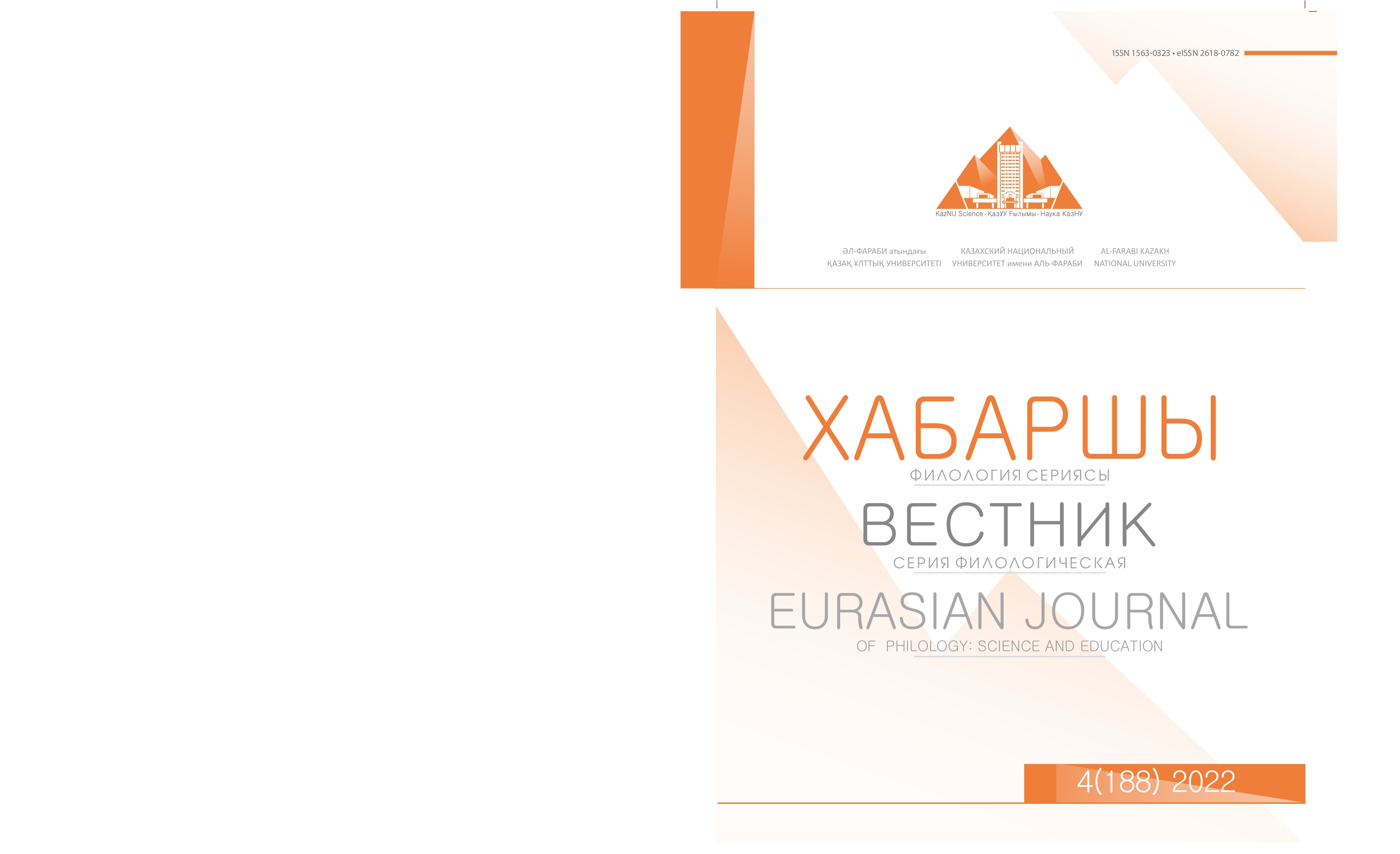Collocation of the auxiliary verb tur with the notional verb and its grammatical semantics in the Kazakh language
DOI:
https://doi.org/10.26577/EJPh.2022.v188.i4.05Abstract
Auxiliary verbs are functional auxiliary words that have been widely used from the ancient inscriptions to the contemporary Turki. This study focuses on the written usage of the tur- auxiliary verb in Kazakh language, which belongs to a family of certain static and dynamic verbs. Explanations for tur- are frequently merged with zhat (zhatyr), otyr, and zhur on the grounds of their similarities in grammatical meaning, albeit the distinctions in each of their combination potential with notional verbs as well as grammatical meaning. In light of this, this study intends to make a data-based presentation of how Kazakh notional verbs beginning with tur- is used in conjunction with the suffixes a\-e\-j, -p\-ip\-yp, -ğaly\ -geli\-qaly\-keli. Moreover, this study innovatively adopted a novel linguistic research method, i.e., determining whether the verbs’ lexical meaning is continuous, static, repetitive, productive, and bounded, when analyzing the combination features of tur- with notional verbs, instead of using the conventional analytical classification by the Kazakh verbs’ lexical meaning. In addition to that, this study also systematically describes the subtle differences in the aspectual meaning of tur- as well as the implied mood and fixed expression of its usage in sentences. This research not only depicts the overall characteristics of the auxiliary verb tur but also contributes to distinguishing it from other auxiliary verbs such as zhat (zhatyr), otyr and zhur.






